Opinion & Analysis
Parents, get out of the way and let them play golf!
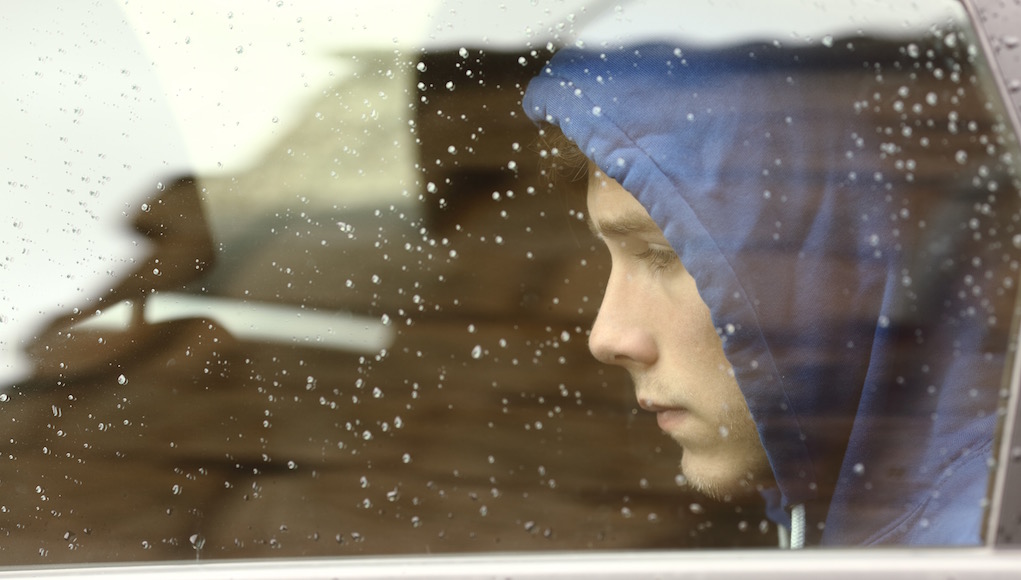
In my work, I see a lot of games, a lot of athletes and a lot of interesting coach and parent behavior. The last one is the topic of this story, because parent behavior is a critical piece in how much young players enjoy golf … and how long they keep playing.
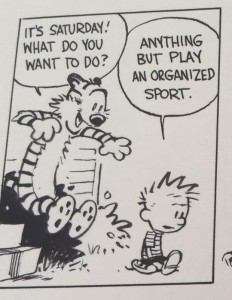
The sad reality is that the majority of young athletes, including young golfers, drop out of competitive sports by the time they reach the age of 14. A study from the National Alliance of Sports tells us that more than 70 percent of young athletes leave competitive sports by that age. Why? It has nothing to do with the game. It likely isn’t the competition, the work involved or the effort required, either. Instead, it is the young people’s greatest fans, their parents — and sometimes their coaches — who take the fun away and make the experience of sports too complicated for the child to enjoy.
Instead of the pure joy of playing and achieving, young golfers get bogged down by heavy expectations, the pressure to win, and other complications introduced by the very adults who are most invested in them playing the sport. This may not be you, but for the sake of organized youth sports, please read on. And if you agree with what’s written, pass this story on.
Egos Run Amok
I’ve run a number of sessions on high performance for young golfers recently; a hot topic is always pressure and how young golfers handle it. Part of the complication is that mom and/or dad are often the biggest source of pressure. They create expectations that might be difficult to reach, and over time, that sucks the fun out of the game for their kids.
Is it really about the kids or the parents’ egos? The kids, with their $300 shoes, top-of-the-line equipment, and bag full of Pro Vs look like mini-professionals, one step from the tour. What starts out as a desire to have their kids be active and play their parent’s favorite game can sometimes shift into something else. Motives change, and often not for the better.
Do You Have a Frustration Gap?
Many parents see their child on the course or the practice tee as what they’d like their child to be, and not what their child actually is. I call this the Frustration Gap. Parents watch their kids perform and the frustration builds … and builds … and builds as the parent waits for the child to reach the performance level the parent hopes to see.
While this frustration is not much fun for the parent, it is less fun for the child, who is constantly trying to live up to the parent’s expectations. Usually, those expectations are unrealistic, and not in line with the child’s abilities or motivations. This tension is a performance crusher, and can lead a child in the wrong direction – sometimes out of the game for good.
The Mini-Van Golf Prison
Is your vehicle a Mini-Van Golf Prison, a place your child is trapped as you express your frustration with his or her performance? While most parents have good intentions for these chats, their budding professional becomes the target for all sorts of emotions felt by the parent while watching their child and expecting more.
What happened out there today? You looked tired… was that it? I’ve seen you play so much better than you did today. What’s wrong?
These questions and comments can begin a spiral of frustration between a young golfer and parent. And unfortunately, these opening lines often lead to deeper criticisms and questions resulting from the parent’s frustration. I really wish I could measure how much confidence the mini-van prison syndrome has destroyed in young players. All I know is it’s a problem, and awareness of your own car rides after the round is something to consider.
Some Ideas to Help
To help you and your young golfer avoid the Frustration Gap and the Mini-Van Prison, and keep them enjoying the game, here are a few ideas to consider.
1. Step back emotionally. Don’t forget this is your child’s life and experience. One of the joys of being a parent is guiding your child through life and enjoying their successes, but it can be taken too far. If you become obsessed with your child’s performance, and find yourself placing unrealistic expectations on them, you need to take a step back.
2. Make car rides positive experiences. Don’t talk about the game in the car. Let the child initiate any conversation related to the game. If they want to share, they will. And make sure to let the child know you are their biggest supporter, and will be there for them whether they win or lose; play well or make mistakes.
3. Praise achievement. Don’t be critical or instructive. Learn to praise achievement and not focus on your child’s limitations. Make sure the child knows you are proud of a great shot, round and attitude.
4. Focus on process and effort. Don’t be too results-oriented. Your priority for your child needs to be that they feel good about themselves and are happy so that they are motivated to play again tomorrow.
5. Let your young golfer do what is right for them now. Don’t push the child based on your desires. Encouraging your child is great, but don’t cross the line and push your child further than he or she wants to go right now.
6. Let coaches coach! Don’t be both the parent and coach. Coaching and instruction both from parents and coaches confuses the child and has little positive impact.
7. Adjust your expectations. Don’t allow your frustration to build. Letting your Frustration Gap build is not helpful for you or the child. A parent who bottles up frustration becomes a ticking time bomb, waiting for an opportunity for the frustration to become uncorked.
8. Every child makes mistakes! Don’t hyper-focus on your child. Parents put their own children under a microscope, and live and die by each movement the child makes. This hyper-focus on your own child — watching their every move — creates a lack of perspective relative to the other kids on the course, and in the game in general.
If your child is one of the chosen few who are talented enough to play college golf, or even make their way into the professional ranks, great. But 99.9 percent of kids won’t go on to do these things. The important thing is to set the table early for these young players to enjoy what is the best game in the world … for a lifetime.
- LIKE328
- LEGIT49
- WOW15
- LOL4
- IDHT5
- FLOP4
- OB6
- SHANK11
19th Hole
Vincenzi’s 2024 Texas Children’s Houston Open betting preview

As the Florida swing comes to an end, the PGA Tour makes its way to Houston to play the Texas Children’s Houston Open at Memorial Park Golf Course.
This will be the fourth year that Memorial Park Golf Course will serve as the tournament host. The event did not take place in 2023, but the course hosted the event in 2020, 2021 and 2022.
Memorial Park is a par-70 layout measuring 7,432 yards and features Bermudagrass greens. Historically, the main defense for the course has been thick rough along the fairways and tightly mown runoff areas around the greens. Memorial Park has a unique setup that features three Par 5’s and five Par 3’s.
The field will consist of 132 players, with the top 65 and ties making the cut. There are some big names making the trip to Houston, including Scottie Scheffler, Wyndham Clark, Tony Finau, Will Zalatoris and Sahith Theegala.
Past Winners at Memorial Park
- 2022: Tony Finau (-16)
- 2021: Jason Kokrak (-10)
- 2020: Carlos Ortiz (-13)
In this article and going forward, I’ll be using the Rabbit Hole by Betsperts Golf data engine to develop my custom model. If you want to build your own model or check out all of the detailed stats, you can sign up using promo code: MATTVIN for 25% off any subscription package (yearly is best value).
Key Stats For Memorial Park
Let’s take a look at several metrics for Memorial Park to determine which golfers boast top marks in each category over their last 24 rounds:
Strokes Gained: Approach
Memorial Park is a pretty tough golf course. Golfers are penalized for missing greens and face some difficult up and downs to save par. Approach will be key.
Total Strokes Gained: Approach per round in past 24 rounds:
- Tom Hoge (+1.30)
- Scottie Scheffler (+1.26)
- Keith Mitchell (+0.97)
- Tony Finau (+0.92)
- Jake Knapp (+0.84)
Strokes Gained: Off the Tee
Memorial Park is a long golf course with rough that can be penal. Therefore, a combination of distance and accuracy is the best metric.
Total Strokes Gained: Off the Tee per round in past 24 rounds:
- Scottie Scheffler (+0.94)
- Kevin Dougherty (+0.93)
- Cameron Champ (+0.86)
- Rafael Campos (+0.84)
- Si Woo Kim (+0.70)
Strokes Gained Putting: Bermudagrass + Fast
The Bermudagrass greens played fairly fast the past few years in Houston. Jason Kokrak gained 8.7 strokes putting on his way to victory in 2021 and Tony Finau gained in 7.8 in 2022.
Total Strokes Gained Putting (Bermudagrass) per round past 24 rounds (min. 8 rounds):
- Adam Svensson (+1.27)
- Harry Hall (+1.01)
- Martin Trainer (+0.94)
- Taylor Montgomery (+0.88)
- S.H. Kim (+0.86)
Strokes Gained: Around the Green
With firm and undulating putting surfaces, holding the green on approach shots may prove to be a challenge. Memorial Park has many tightly mowed runoff areas, so golfers will have challenging up-and-down’s around the greens. Carlos Ortiz gained 5.7 strokes around the green on the way to victory in 2020.
Total Strokes Gained: Around the Green per round in past 24 rounds:
- Mackenzie Hughes (+0.76)
- S.H. Kim (+0.68)
- Scottie Scheffler (+0.64)
- Jorge Campillo (+0.62)
- Jason Day (+0.60)
Strokes Gained: Long and Difficult
Memorial Park is a long and difficult golf course. This statistic will incorporate players who’ve had success on these types of tracks in the past.
Total Strokes Gained: Long and Difficult in past 24 rounds:
- Scottie Scheffler (+2.45)
- Ben Griffin (+1.75)
- Will Zalatoris (+1.73)
- Ben Taylor (+1.53)
- Tony Finau (+1.42)
Course History
Here are the players who have performed the most consistently at Memorial Park.
Strokes Gained Total at Memorial Park past 12 rounds:
- Tyson Alexander (+3.65)
- Ben Taylor (+3.40)
- Tony Finau (+2.37)
- Joel Dahmen (+2.25)
- Patton Kizzire (+2.16)
Statistical Model
Below, I’ve reported overall model rankings using a combination of the five key statistical categories previously discussed.
These rankings are comprised of SG: App (24%) SG: OTT (24%); SG: Putting Bermudagrass/Fast (13%); SG: Long and Difficult (13%); SG: ARG (13%) and Course History (13%)
- Scottie Scheffler
- Wyndham Clark
- Tony Finau
- Joel Dahmen
- Stephan Jaeger
- Aaron Rai
- Sahith Theegala
- Keith Mitchell
- Jhonnatan Vegas
- Jason Day
- Kurt Kitayama
- Alex Noren
- Will Zalatoris
- Si Woo Kim
- Adam Long
2024 Texas Children’s Houston Open Picks
Will Zalatoris +2000 (Caesars)
Scottie Scheffler will undoubtedly be difficult to beat this week, so I’m starting my card with someone who I believe has the talent to beat him if he doesn’t have his best stuff.
Will Zalatoris missed the cut at the PLAYERS, but still managed to gain strokes on approach while doing so. In an unpredictable event with extreme variance, I don’t believe it would be wise to discount Zalatoris based on that performance. Prior to The PLAYERS, the 27-year-old finished T13, T2 and T4 in his previous three starts.
Zalatoris plays his best golf on long and difficult golf courses. In his past 24 rounds, he ranks 3rd in the category, but the eye test also tells a similar story. He’s contended at major championships and elevated events in the best of fields with tough scoring conditions. The Texas resident should be a perfect fit at Memorial Park Golf Club.
Alex Noren +4500 (FanDuel)
Alex Noren has been quietly playing some of his best golf of the last half decade this season. The 41-year-old is coming off back-to-back top-20 finishes in Florida including a T9 at The PLAYERS in his most recent start.
In his past 24 rounds, Noren ranks 21st in the field in Strokes Gained: Off the Tee, 30th in Strokes Gained: Around the Green, 25th in Strokes Gained: Total on long and difficult courses and 21st in Strokes Gained: Putting on fast Bermudagrass greens.
In addition to his strong recent play, the Swede also has played well at Memorial Park. In 2022, Noren finished T4 at the event, gaining 2.2 strokes off the tee and 7.0 strokes on approach for the week. In his two starts at the course, he’s gained an average of .6 strokes per round on the field, indicating he is comfortable on these greens.
Noren has been due for a win for what feels like an eternity, but Memorial Park may be the course that suits him well enough for him to finally get his elusive first PGA Tour victory.
Mackenzie Hughes +8000 (FanDuel)
Mackenzie Hughes found himself deep into contention at last week’s Valspar Championship before faltering late and finishing in a tie for 3rd place. While he would have loved to win the event, it’s hard to see the performance as anything other than an overwhelming positive sign for the Canadian.
Hughes has played great golf at Memorial Park in the past. He finished T7 in 2020, T29 in 2021 and T16 in 2022. The course fit seems to be quite strong for Hughes. He’s added distance off the tee in the past year or and ranks 8th in the field for apex height, which will be a key factor when hitting into Memorial Park’s elevated greens with steep run-off areas.
In his past 24 rounds, Hughes is the best player in the field in Strokes Gained: Around the Greens. The ability to scramble at this course will be extremely important. I believe Hughes can build off of his strong finish last week and contend once again to cement himself as a President’s Cup consideration.
Akshay Bhatia +8000 (FanDuel)
Akshay Bhatia played well last week at the Valspar and seemed to be in total control of his golf ball. He finished in a tie for 17th and shot an impressive -3 on a difficult Sunday. After struggling Thursday, Akshay shot 68-70-68 in his next three rounds.
Thus far, Bhatia has played better at easier courses, but his success at Copperhead may be due to his game maturing. The 22-year-old has enormous potential and the raw talent to be one of the best players in the world when he figures it all out.
Bhatia is a high upside play with superstar qualities and may just take the leap forward to the next stage of his career in the coming months.
Cameron Champ +12000 (FanDuel)
Cameron Champ is a player I often target in the outright betting market due to his “boom-or-bust” nature. It’s hard to think of a player in recent history with three PGA Tour wins who’s been as inconsistent as Champ has over the course of his career.
Despite the erratic play, Cam Champ simply knows how to win. He’s won in 2018, 2019 and 2021, so I feel he’s due for a win at some point this season. The former Texas A&M product should be comfortable in Texas and last week he showed us that his game is in a pretty decent spot.
Over his past 24 rounds, Champ ranks 3rd in Strokes Gained: Off the Tee and 30th in Strokes Gained: Total on long and difficult courses. Given his ability to spike at any given time, Memorial Park is a good golf course to target Champ on at triple digit odds.
Robert MacIntyre +12000 (FanDuel)
The challenge this week is finding players who can possibly beat Scottie Scheffler while also not dumping an enormous amount of money into an event that has a player at the top that looks extremely dangerous. Enter McIntyre, who’s another boom-or-bust type player who has the ceiling to compete with anyone when his game is clicking on all cylinders.
In his past 24 rounds, MacIntyre ranks 16th in the field in Strokes Gained: Off the Tee, 17th in Strokes Gained: Around the Green and 10th in Strokes Gained: Total on long and difficult courses.
MacIntyre’s PGA Tour season has gotten off to a slow start, but he finished T6 in Mexico, which is a course where players will hit driver on the majority of their tee shots, which is what we will see at Memorial Park. Texas can also get quite windy, which should suit MacIntyre. Last July, the Scot went toe to toe with Rory McIlroy at the Scottish Open before a narrow defeat. It would take a similar heroic effort to compete with Scheffler this year in Houston.
Ryan Moore +15000 (FanDuel)
Ryan Moore’s iron play has been absolutely unconscious over his past few starts. At The PLAYERS Championship in a loaded field, he gained 6.1 strokes on approach and last week at Copperhead, he gained 9.0 strokes on approach.
It’s been a rough handful of years on Tour for the 41-year-old, but he is still a five-time winner on the PGA Tour who’s young enough for a career resurgence. Moore has chronic deterioration in a costovertebral joint that connects the rib to the spine, but has been getting more consistent of late, which is hopefully a sign that he is getting healthy.
Veterans have been contending in 2024 and I believe taking a flier on a proven Tour play who’s shown signs of life is a wise move at Memorial Park.
- LIKE13
- LEGIT1
- WOW1
- LOL0
- IDHT0
- FLOP0
- OB0
- SHANK1
Opinion & Analysis
Ryan: Why the race to get better at golf might be doing more harm than good

B.F. Skinner was one of the most important psychologists of the 20th century, developing the foundation of the development of reinforcement, and in doing so, creating the concept of behaviorism. In simple terms, this means that we are conditioned by our habits. In practical terms, it explains the divide between the few and far between elite instructors and college coaches.
To understand the application, let’s quickly review one of B.F. Skinner’s most important experiments; superstitions in the formation of behavior by pigeons. In this experiment, food was dispensed to pigeons at random intervals. Soon, according to Skinner, the pigeons began to associate whatever action they were doing at the time of the food being dispensed. According to Skinner, this conditioned that response and soon, they simply haphazardly repeated the action, failing to distinguish between cause and correlation (and in the meantime, looking really funny!).
Now, this is simply the best way to describe the actions of most every women’s college golf coach and too many instructors in America. They see something work, get positive feedback and then become conditioned to give the feedback, more and more, regardless of if it works (this is also why tips from your buddies never work!).
Go to a college event, particularly a women’s one, and you will see coaches running all over the place. Like the pigeons in the experiment, they have been conditioned into a codependent relationship with their players in which they believe their words and actions, can transform a round of golf. It is simply hilarious while being equally perturbing
In junior golf, it’s everywhere. Junior golf academies make a living selling parents that a hysterical coach and over-coaching are essential ingredients in your child’s success.
Let’s be clear, no one of any intellect has any real interest in golf — because it’s not that interesting. The people left, including most coaches and instructors, carve out a small fiefdom, usually on the corner of the range, where they use the illusion of competency to pray on people. In simple terms, they baffle people with the bullshit of pseudo-science that they can make you better, after just one more lesson.
The reality is that life is an impromptu game. The world of golf, business, and school have a message that the goal is being right. This, of course, is bad advice, being right in your own mind is easy, trying to push your ideas on others is hard. As a result, it is not surprising that the divorce rate among golf professionals and their instructors is 100 percent. The transfer rate among college players continues to soar, and too many courses have a guy peddling nefarious science to good people. In fact, we do at my course!
The question is, what impact does all this have on college-age and younger kids? At this point, we honestly don’t know. However, I am going to go out on a limb and say it isn’t good.
Soren Kierkegaard once quipped “I saw it for what it is, and I laughed.” The actions of most coaches and instructors in America are laughable. The problem is that I am not laughing because they are doing damage to kids, as well as driving good people away from this game.
The fact is that golfers don’t need more tips, secrets, or lessons. They need to be presented with a better understanding of the key elements of golf. With this understanding, they can then start to frame which information makes sense and what doesn’t. This will emancipate them and allow them to take charge of their own development.
- LIKE14
- LEGIT4
- WOW1
- LOL2
- IDHT0
- FLOP1
- OB0
- SHANK11
19th Hole
Vincenzi’s 2024 Valspar Championship betting preview: Elite ballstrikers to thrive at Copperhead
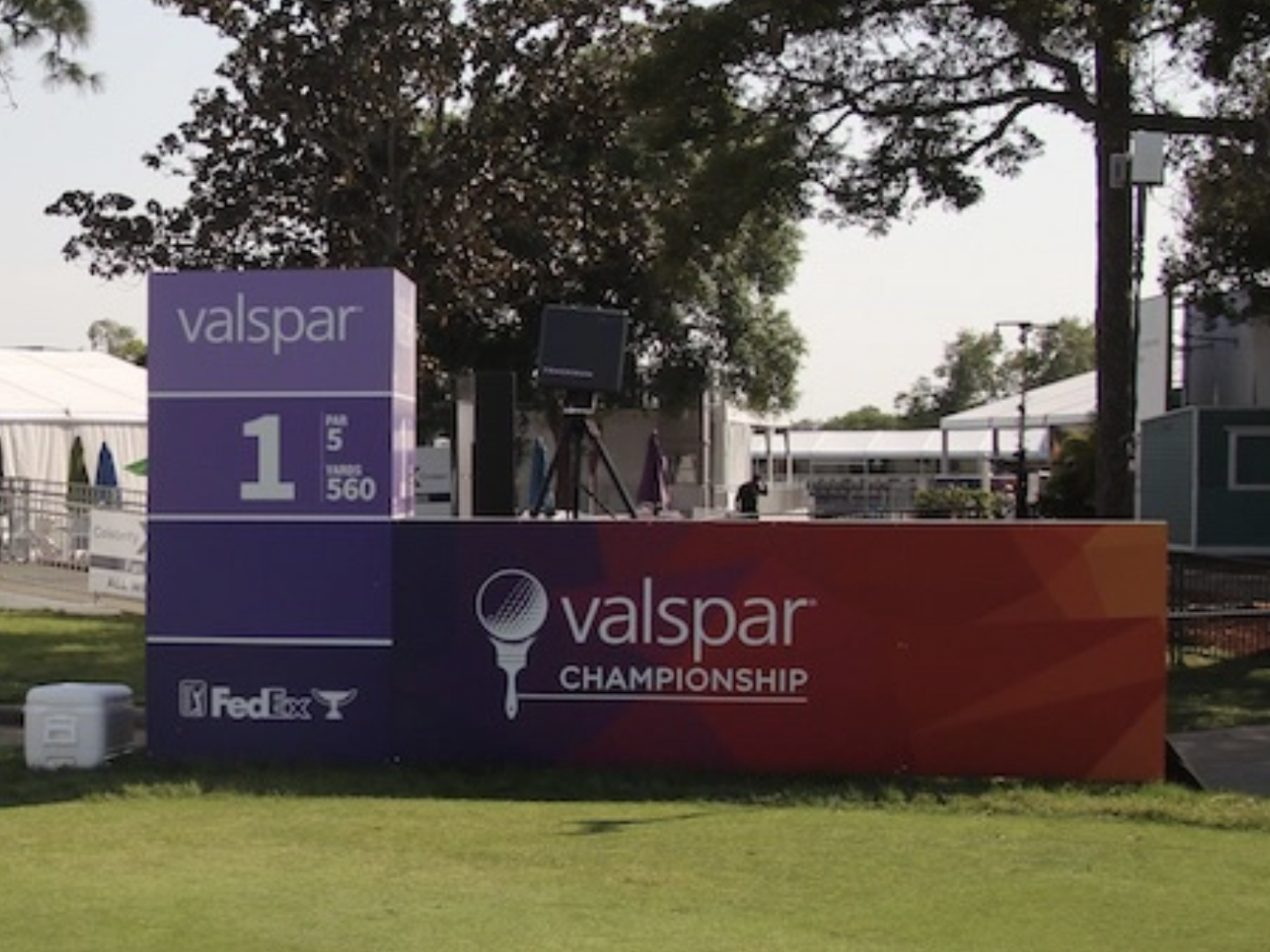
The PGA TOUR will stay in Florida this week for the 2024 Valspar Championship.
The Copperhead Course at Innisbrook Resort is a par 71 measuring 7,340 yards and features Bermudagrass greens overseeded with POA. Infamous for its difficulty, the track will be a tough test for golfers as trouble lurks all over the place. Holes 16, 17 and 18 — also known as the “Snake Pit” — make up one of the toughest three-hole stretches in golf and should lead to a captivating finish on Sunday.
The field is comprised of 156 golfers teeing it up. The field this week is solid and is a major improvement over last year’s field that felt the impact of players skipping due to a handful of “signature events” in a short span of time.
Past Winners at Valspar Championship
- 2023: Taylor Moore (-10)
- 2022: Sam Burns (-17)
- 2021: Sam Burns (-17)
- 2019: Paul Casey (-8)
- 2018: Paul Casey (-10)
- 2017: Adam Hadwin (-14)
- 2016: Charl Schwartzel (-7)
- 2015: Jordan Spieth (-10)
In this article and going forward, I’ll be using the Rabbit Hole by Betsperts Golf data engine to develop my custom model. If you want to build your own model or check out all of the detailed stats, you can sign up using promo code: MATTVIN for 25% off any subscription package (yearly is best value).
Key Stats For Copperhead
1. Strokes Gained: Approach
Strokes Gained: Approach grades out as the most important statistic once again this week. Copperhead really can’t be overpowered and is a second-shot golf course.
Total SG: Approach Over Past 24 Rounds (per round)
- Tony Finau (+.90)
- Nick Taylor (+.81)
- Justin Thomas (+.77)
- Greyson Sigg (+.69)
- Christiaan Bezuidenhout (+.67)
2. Good Drive %
The long hitters can be a bit limited here due to the tree-lined fairways and penal rough. Playing from the fairways will be important, but laying back too far will cause some difficult approaches with firm greens that may not hold shots from long irons.
Golfers who have a good balance of distance and accuracy have the best chance this week.
Good Drive % Over Past 24 Rounds
- Brice Garnett (+91.3%)
- Zach Johnson (+91.1%)
- Sam Ryder (+90.5%)
- Ryan Moore (+90.4%)
- Aaron Rai (+89.7%)
3. Strokes Gained: Ball Striking
Adding ball-striking puts even more of a premium on tee-to-green prowess in the statistical model this week. Golfers who rank highly in ball-striking are in total control of the golf ball which is exceedingly important at Copperhead.
SG: Ball Striking Over Past 24 Rounds:
- Xander Schauffele (+1.32)
- Keith Mitchell (+1.29)
- Tony Finau (+1.24)
- Cameron Young (+1.17)
- Doug Ghim (+.95)
4. Bogey Avoidance
With the conditions likely to be difficult, avoiding bogeys will be crucial this week. In a challenging event like the Valspar, oftentimes the golfer who is best at avoiding mistakes ends up on top.
Gritty golfers who can grind out difficult pars have a much better chance in an event like this than a low-scoring birdie-fest.
Bogey Avoidance Over Past 24 Rounds
- Brice Garnett (+9.0)
- Xander Schauffele (+9.3)
- Austin Cook (+9.7)
- Chesson Hadley (+10.0)
- Greyson Sigg (+10.2)
5. Strokes Gained: Total in Difficult Conditions
Conditions will be tough this week at Copperhead. I am looking for golfers who can rise to the occasion if the course plays as difficult as it has in the past.
Strokes Gained: Total in Difficult Conditions Over Past 24 rounds
- Xander Schauffele (+1,71)
- Min Woo Lee (+1.39)
- Cameron Young (+1.27)
- Jordan Spieth (+1.08)
- Justin Suh (+.94)
6. Course History
That statistic will tell us which players have played well at Copperhead in the past.
Course History Over Past 24 rounds
- Patrick Cantlay (+3.75)
- Sam Burns (+2.49)
- Davis Riley (+2.33)
- Matt NeSmith (+2.22)
- Jordan Spieth (+2.04)
The Valspar Championship Model Rankings
Below, I’ve compiled overall model rankings using a combination of the five key statistical categories previously discussed — SG: Approach (27%), Good Drive % (15%), SG: BS (20%), Bogeys Avoided (13%), Course History (13%) Strokes Gained: Total in Difficult Conditions (12%).
- Xander Schauffele
- Doug Ghim
- Victor Perez
- Greyson Sigg
- Ryan Moore
- Tony Finau
- Justin Thomas
- Sam Ryder
- Sam Burns
- Lucas Glover
2024 Valspar Championship Picks
Justin Thomas +1400 (DraftKings)
Justin Thomas will be disappointed with his finish at last week’s PLAYERS Championship, as the past champion missed the cut despite being in some decent form heading into the event. Despite the missed cut, JT hit the ball really well. In his two rounds, the two-time major champion led the field in Strokes Gained: Approach per round.
Thomas has been up and down this season. He’s missed the cut in two “signature events” but also has finishes of T12 at the Arnold Palmer Invitational, T12 at the Waste Management Phoenix Open, T6 at the Pebble Beach AT&T Pro-Am and T3 at the American Express. In his past 24 rounds, he ranks 3rd in the field in Strokes Gained: Approach and 6th in Strokes Gained: Ball Striking in the field.
Thomas loves Copperhead. In his last three tries at the course, he’s finished T13, T3 and T10. Thomas would have loved to get a win at a big event early in the season, but avoidable mistakes and a balky putter have cost him dearly. I believe a trip to a course he loves in a field he should be able to capitalize on is the right recipe for JT to right the ship.
Christiaan Bezuidenhout +6000 (FanDuel)
Christiaan Bezuidenhout is playing spectacular golf in the 2024 season. He finished 2nd at the American Express, T20 at Pebble Beach and T24 at the Genesis Invitational before finishing T13 at last week’s PLAYERS Championship.
In his past 24 rounds, the South African ranks 3rd in the field in Strokes Gained: Approach and 26th in Strokes Gained: Ball Striking. Bezuidenhout managed to work his way around TPC Sawgrass last week with minimal damage. He only made five bogeys in the entire week, which is a great sign heading into a difficult Copperhead this week.
Bezuidenhout is winless in his PGA Tour career, but certainly has the talent to win on Tour. His recent iron play tells me that this week could be a breakthrough for the 35-year-old who has eyes on the President’s Cup.
Doug Ghim +8000 (FanDuel)
Doug Ghim has finished in the top-16 of his past five starts. Most recently, Ghim finished T16 at The PLAYERS Championship in a loaded field.
In his past 24 rounds, Ghim ranks 8th in Strokes Gained: Approach and 5th in Strokes Gained: Ball Striking. In terms of his fit for Copperhead, the 27-year-old ranks 12th in Bogey Avoidance and 7th in Strokes Gained: Total in Difficult Conditions, making him a great fit for the course.
Ghim has yet to win on Tour, but at one point he was the top ranked Amateur golfer in the world and played in the 2017 Arnold Palmer Cup and 2017 Walker Cup. He then won the Ben Hogan award for the best male college golfer in 2018. He certainly has the talent, and there are signals aplenty that his talent in ready to take him to the winner’s circle on the PGA Tour.
Sepp Straka +8000 (BetRivers)
Sepp Straka is a player who’s shown he has the type of game that can translate to a difficult Florida golf course. The former Presidents Cup participant won the 2022 Honda Classic in tough conditions and should thrive with a similar test at Copperhead.
It’s been a slow 2024 for Straka, but his performance last week at the PLAYERS Championship surely provides some optimism. He gained 5.4 strokes on approach as well as 1.88 strokes off the tee. The tee-to-green game Straka showed on a course with plenty of danger demonstrates that he can stay in control of his golf ball this week.
It’s possible that the strong performance last week was an outlier, but I’m willing to bet on a proven winner in a weaker field at a great number.
Victor Perez +12000 (FanDuel)
Victor Perez is no stranger to success in professional golf. The Frenchman has three DP World Tour wins including a Rolex Series event. He won the 2019 Alfred Dunhill Links Championship, as well as the 2023 Abu Dhabi HSBC Championship, which are some big events.
Perez earned his PGA Tour card this season and enters the week playing some fantastic golf. He finished in a tie for 16th in Florida at the Cognizant Classic and then tied for third in his most recent start at the Puerto Rico Open.
In his past 24 rounds in the field, Perez ranks 11th in Strokes Gained: Approach, 1oth in Strokes Gained: Ball Striking, 6th in Good Drive % and 15th in Bogey Avoidance.
Perez comes in as a perfect fit for Copperhead and offers serious value at triple-digit odds.
- LIKE16
- LEGIT3
- WOW2
- LOL1
- IDHT0
- FLOP1
- OB2
- SHANK6
-

 19th Hole3 days ago
19th Hole3 days agoJohn Daly stuns fans into silence with brutal opening tee shot on PGA Tour Champions
-

 19th Hole1 week ago
19th Hole1 week ago2-time major champ announces shock retirement from the sport at age of 33
-

 19th Hole1 week ago
19th Hole1 week agoEdoardo Molinari reveals the latest PGA Tour golfer to turn down ‘good offer’ from LIV Golf
-

 19th Hole1 week ago
19th Hole1 week agoScottie Scheffler had an interesting response when asked how he ‘quiets the noise’ following Players victory
-

 Equipment2 weeks ago
Equipment2 weeks agoBest driver 2024: The best driver for you, as recommend by expert club fitters
-

 19th Hole1 week ago
19th Hole1 week agoJon Rahm dealt fresh blow to hopes of qualifying for 2025 Ryder Cup
-

 19th Hole3 days ago
19th Hole3 days agoCharlie Woods finds it tough going on American Junior Golf Association debut
-
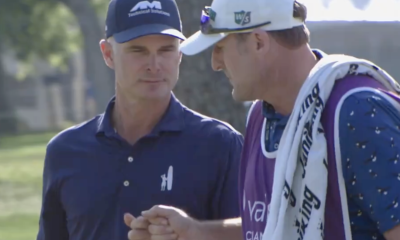
 19th Hole6 days ago
19th Hole6 days agoWhy Kevin Streelman sought USGA approval to use this equipment tool as he leads Valspar after round one

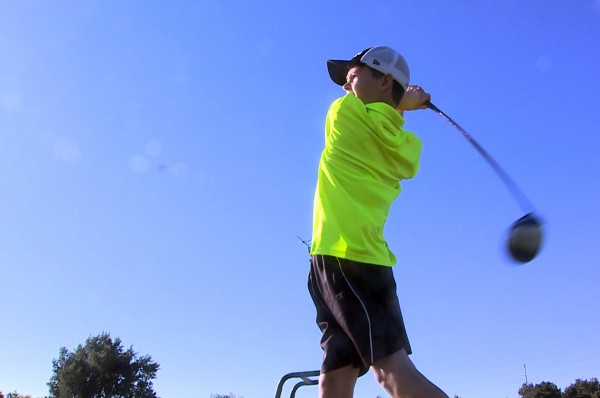




















golfraven
Jun 3, 2016 at 4:07 pm
I usually step away when my 2.5 years old one starts to throw his clubs in the air. Danger especially when at home. Other then that I love to see him practice just out of his own will and just enjoy watching him do it. When I try to show him something he goes bananas so I rather don’t get involved as he knows best.
Armypilot84
Jun 2, 2016 at 8:21 am
I think this is a really interesting article. I completely agree with the idea of “getting out of the way” when it comes to a young child playing golf. Golf is an incredibly hard game that I truly believe in my heart that no one is naturally good at. You have to love the game in order to want to get better. I only take me 5 year old son to the range when he asks me to go, and while there I do not try to instruct his swing. We play games where he tries to hit targets. I have only taken him a handful of times to go play 9 with me in the evenings and when we go I have a strict “No Frown” policy. I do not focus on his game at all, but his attitude. I give him one “mulligan” when it comes to throwing a fit or getting upset after hitting a bad shot. After that we go home if he does it again. It sucks wasting the $40+ in greens fees after only 2-3 holes, but it seems to have kept him yearning to play more. I just want him to have fun putting the ball in the hole because that is what the game is all about. I don’t care how it gets there.
John Haime
Jun 2, 2016 at 1:07 pm
Thanks for sharing your experience. Nice approach you have. Some fundamental instruction combined with allowing the young player to take ownership of the experience should lead to fun and great results.
Dr. Dormie
Jun 1, 2016 at 1:26 pm
John, your advice for dealing with the interfering, hovering parent of juniors is sound. I watch it all the time at a local range where mothers and fathers can’t let the kid practice without cleaning his/her clubs, teeing up the ball, taking videos, and playing the part of a coach in instructing. It is oppressive in its smothering of the child and makes the game way too serious at way too young an age.
In terms of your qualifications, please be sure you do not represent or insinuate you are credentialed, educated, trained or licensed as a psychologist in your articles or website. Being inspired by Daniel Goleman and his concept of “emotional intelligence” is just one small part of the pie. I say this as a clinical and sport psychologist who has been in practice for 40 years.
John Haime
Jun 1, 2016 at 2:39 pm
Hi Dr. Dormie,
Thanks so much for your comments on the article – much appreciated.
And, thanks for the advice and placing me a convenient little box LOL.
FYI – respectfully, sport psychology is a very small piece of working with athletes and high performance. I use some basic principles that are widely available to all, but getting sustainable results with athletes and performers reaches far beyond the narrow reach of traditional sport psychology. Psychology is about fixing problems, I build and develop athletes, performers and people – very different approaches.
My client list, including some of the world’s leading athletes, suggests that I probably know what I’m doing. It probably extends beyond inspiration from Dan Goleman (:
Dr. Dormie
Jun 1, 2016 at 8:46 pm
John, I did not place you in a “box.” I simply asked you to be careful in how you represent yourself. Your comments about sport psychologists are inaccurate. You say “psychology is about fixing problems.” When it comes to sport psychology, this couldn’t be further from the truth. Clinical psychology is about fixing problems–not sport psychology. Ask any respected golf psychologist if what he’s/she’s doing is “fixing problems.” You sound a bit defensive, referring to your client list, but I guess “giving you advice” was asking for some defensiveness. So, I won’t pursue this any further.
John Haime
Jun 2, 2016 at 9:22 am
thanks Dr. Dorrie.
I don’t feel the response is a defensive one – but when someone questions my abilities to do what I do – I like to respond and explain. The idea here is to comment on the article – not on the abilities or credentials of the writer.
I refer to my client list and results only to point out that’s all that really counts in the real world. Credentials get your foot in the door – but then you must prove you can actually help people and get results. I hire sports psyches and many find it difficult to make the transition from the classroom to the locker room – they are night and day.
And, my point was clinical psychology is fixing problems. Working with athletes re High performance is coaching – identifying a gap and closing it. Traditional sport psychology can be one tool in closing that gap.
Hope you keep reading and commenting!! Would love to hear your ideas on helping athletes offline.
Cheers!
emerson boozer
Jun 1, 2016 at 4:34 am
Great article. I happen to practice the day of the junior close open. In the parking lot was kids and their drivers (no kidding) and/or dads getting out all their new gear and own pull carts, etc…
Then, the bus pulled up and all the kids who used the donated gear came running off yelling and screaming. The range was a zoo.
I compete with our junior club champ on our travelling team and he came over and said hello. I asked him wasn’t it great to be able to play with his friends? He said he had no friends and liked playing with me (i’m 35 years older). The sadness on his face. My heart broke.
He made full ride scholarship in the states and his father moved to the states off campus. I hate to think about it.
Jon
Jun 1, 2016 at 1:59 am
Thanks for the article. It’s very much along the lines of those I’ve read before about sports parents, and with golf in particular, falls into the “early specialization leads to burnout and hinders potential” genre. The issue I have (sorry!) is that these all start with the basic premise that kids drop out of sports by the time they are 14 because their parents were overbearing (“no fun”), or the kid is burned out from too much of one sport. But those conclusions, upon which the entire rest of the articles are built upon, are Never backed up with any evidence or data. In my experience with junior golf (going on roughly 20 years), I can’t think of Any competitive golfers (those who had some dedication to the game) who quit the sport for either of these reasons. The very few that I know of that did stop did so because they wanted to play a different sport or spend more time on their academics. As a lifelong athlete, my observation is just the opposite – the biggest reason kids, and adults, drop out of golf is because they suck at it….sucking is no fun, regardless of your age. Playing well is tons of fun, regardless of your age. Playing decent golf is hard. It’s one of those sports where parents often play a critical role in helping their kids not suck. Whether it’s through teaching them or making sure they get appropriate instruction. My take is that I’d like to see articles written from that perspective and help parents be better golf parents (and coaches if that is their chosen role in the relationship). In short, parents who dedicate the time and energy it takes to develop or support the development of a junior golfer should be celebrated, not ostracized, unless you have some actual peer reviewed data that proves otherwise. Telling parents to “Get Out of the Way” …not the best way to begin the conversation.
John Haime
Jun 1, 2016 at 1:30 pm
Thanks for the comments Jon – appreciated. Interesting experience you have with young golfers.
Give the National Sport Alliance a call and they will give you data and stats to support the numbers in the article. There are other youth sport groups that also have data.
I understand your thoughts. My experience, working with young athletes everyday is I often hear that “mom and dad put too much pressure on me and it’s not fun.” It’s more prevalent than you might think. Often parents have a blindspot – think they are not applying pressure – but they are in the view of the child. As soon as that anxiety creeps in to the child’s experience – other options become more attractive. Wondering if you ever talked to the kids and asked them the REAL reasons why they left? In the article I am primarily referring to competitive kids who have some (or their parents have) some ambition for them to attain a level in the game.
I completely agree that adults drop out of the game because of ability. That is an article for another day as many adults go in without a plan, have unrealistic expectations, underestimate the commitment needed to develop proficiency, get frustrated – and quit. But, in my experience, that is not the case with kids. If parents drop them off at the course and expose them to some good instruction, they typically become quite proficient at the game. As you know, kids pick up everything quicker than adults.
As mentioned in the article. Every parent does not short circuit the experience for kids. But, the article is written to create awareness for parents who do.
“Get out of the way” is direct, but the reality is the parents do get in the way of the experience. It’s important to ensure kids own their own sport experience and not have parental expectations and adult values hanging over them to prevent them from expressing themselves.
The conversation re: team sports is different and much more complicated.
Raven
Jun 1, 2016 at 5:22 pm
Brilliant article – I agree that overbearing parents can make things less fun and push some kids away, but how realistic is this as being a significant reason? I recall my old Japanese karate sensei saying that most people left a sport either as a beginner, or when they reached a level where they were ready to become really good (often in their mid to late teens). Both levels required an extra step up in effort and also filtered out those who were simply not able to progress further. That sensei was also considered an authority in his field. So are these parents actually pushing their kids away, or just making it more appealing to leave at a particular time? Respectfully I completely agree that positive reinforcement will help those who do pursue a sport to a highly skilled level, and I don’t think hyper-focussed parachute parents are good for any child’s life development. I do however see kids leaving at certain competitive levels regardless of parent frustration level.
John Haime
Jun 2, 2016 at 9:47 am
Nice comments Raven.
Yes, agree kids leave for a variety of reasons. But, sport has changed with highly competitive focuses in all sports. College scholarships and the huge opportunities have created a more hyper focus on results – by parents.
Karate etc. may be a bit different from the traditional sports as the “end game” in activities like Karate do not normally lead to large payoffs like traditional sports softening the push and ownership from parents.
Thanks again for the contribution to the conversation.
John Haime
Jun 1, 2016 at 2:51 pm
Hey Jon,
Thanks for the comments – great to get different perspectives.
A few thoughts …
Give National Sport Alliance a call and you can gather the data. There are also other sources that the NSA can recommend.
“Get out of the way” is direct – but exactly what parents must do to allow the kids to own their sport experience and fully express themselves. Parents do “get in the way” of the experience and take ownership themselves.
Just wondering if you have talked to the kids and understood the REAL reasons they are leaving? Other sports and academics are convenient reasons and acceptable – but I think if you really spoke to the kids – you might find something different.
Agree – adults quit because they find it too hard. They often don’t have a plan, expectations are too high, don’t realize the time commitment, get frustrated and may quit. But, kids pick it up easily – and if they have good coaching – I don’t see them leaving because it is too difficult.
thanks again.
Snoopy
May 31, 2016 at 3:21 pm
This is the most unshankable article around. Something great I’ve realized totally outside the context of competitive sports is that good performance can come with hard work, but GREAT performance comes when the work feels like fun. If you’re not having fun on the golf course, parent or player, you should probably find something more productive to do with your time.
John Haime
May 31, 2016 at 4:44 pm
Great comment Snoopy – exactly right. Enjoyment and passion are absolute requirements for great and sustainable performance.
Thanks for contributing!
Alan
May 31, 2016 at 1:13 am
Great article. As a parent myself of 2 young boys who play golf I see this happening a lot. I’ve had to learn to step away and let them get on with it without them worrying what my reaction will be as a result of a bad score or shot! Let them enjoy it and let them have the freedom to keep playing and enjoy themselves on the course!
John Haime
May 31, 2016 at 9:26 am
Great approach Alan – I expect the boys will be playing for awhile!
Bernard
May 30, 2016 at 7:14 pm
I have a son who plays AAU basketball, a lot of what is written here I wholeheartedly agree with. When my son is at practice, I hit the local range to work on golf, so I am there, 5-6 hours a week. I have seen several parent/kid sessions, where at practice the “adult” is hyper coaching and even berating a young kid. In all cases the kid looks miserable. When the fun is gone, the kid will follow it off the the course. I have expectations as a parent, they are work hard and have fun, I try to maintain those twin goals without alienating my child with result based expectations. Feed their passion, do not kill it with trophy dreams. The prize is a well adjusted kid who feels loved.
John Haime
May 31, 2016 at 2:56 pm
Yes – excellent comment Bernard – the article is transferable to all sports. I work in many sports now and see the behavior in all sports. Your last line really is the goal – hoping they also learn lessons from the games that are transferable later on.
Thanks!
8thehardway
May 30, 2016 at 9:37 am
Don’t tell me how to manage my 9 y/o protege, she & I hustled my friends for 350 last weekend and it woulda been double if she made that last putt, but she’s developing the yips; she has got to learn to cope with cigar smoke and swearing if she’s gonna make competitive golf her life.
Instead of listening to this garbage I subscribed to Byung-holio Wei’s newletter – expensive, he’s got the right perspective and I’m gonna spring for a brace for her blown out knee and some Adderall; Byung thinks they don’t drug test kids under 12 so that’s 3 more years of smooth sailing until I sign her up for the men’s John Deere Classic, and if she wins the tractor-pull and the golf tournament all the time I spent as her daddy/caddy, coach and manager will be worth it.
John Haime
May 31, 2016 at 9:23 am
Very good!
KK
May 30, 2016 at 12:37 am
These parents are the definition of arrogance. If the kid is trying, that’s all you can ask. If the kid isn’t, he/she shouldn’t be playing anyway.
WolfWRX
May 29, 2016 at 9:08 pm
Great article. I need to print this off and pin it on my fridge as a reminder to myself. Thank you.
Nick
May 29, 2016 at 6:58 pm
Good advice- interestingly the best female golfers I work with are the ones this article is written towards.
Best for the masses might not be best for the best.
I also have doubts that this is the reason why 70% of kids stop playing organized sport. I stopped playing hockey and my parents were great. You don’t have to hate your parents to have other interests
Nick
May 29, 2016 at 6:52 pm
There is some good advice here- interestingly the best female golfers I work with are the ones this article is written at.
Best for the masses might not be best for the best.
I also have doubts that this is the reason why 70% of kids stop playing organized sport. I stopped playing hockey and my parents were great. You don’t have to hate your parents to have other interests
John Haime
May 30, 2016 at 2:17 pm
Thanks for the comment Nick – good ones. Agree many parents are great and provide a nice environment for the kids to enjoy sports. And, there are many different reasons why kids move away from competitive sports – but when they stop having fun and get tired of the adult values – they are much quicker to turn their heads in other directions. Unfortunately, today, there is a likelihood that the parents own the kids’ sport experience – and not the kids who are playing them.
CD
May 29, 2016 at 2:34 pm
“but we want to keep them playing so it becomes a lifetime interest and passion.”
Why do we???? And if we want them to, and not them want to; then you’ve lost ‘your’ goal before you’ve started anyway.
If people are really doing the points you listed above, don’t be surprised when little Jimmy discovers girls and motorbikes. Or gets a career. Or simply doesn’t want to hang around with dad who is playing a deeply uncool game.
Having to consider, or reconsider any of these points says everything about the parent than the child. This is written in a competitive context; so it’s the parent that has the ego, the insecurity they were never good enough; and is trying to live their thwarted – and unrealistic – dreams vicariously. It’s just about the most selfish thing you can do; try and restrict someone’s freedom of choice and liberty.
John Haime
May 30, 2016 at 2:01 pm
Hey CD – thanks for the comments …
Understand what you are saying.
I think, simply, the goal is to give the kids the opportunity to fall in love with the game – and continue to pursue it. We all know the benefits of the game – and introducing adult values too early in the process can discourage kids away from the game. Agree, kids will leave the game for a variety of reasons, but there’s a much better chance they’ll keep playing if they own it themselves, they have fun and we allow them to discover the many benefits.
M smizzy
May 28, 2016 at 5:08 pm
Italian sparkeling water with lime twist, Truffle fries cooked in duck fat, and a Kobe burger medium?
Forsbrand
May 28, 2016 at 1:06 pm
I have watched some quite disgusting parents at junior coaching “Come on Caleb show them your Tiger stinger”. Yeh he’s 8 years old can barely swing the club!! Absolute mug of a parent and often a high handicapper trying to relive his youth through his child. T
HE sort of guy you just wanna grab and shake!!
Also you’ve got the father that always plays golf with his son in competitions, you know marks his card and low and behold the teenager shoots a super low score, 4 shots lower than the club champion could possibly shoot, yes folks the Magic Marker Brigade! They’ll do anything to get there son noticed / handicap down so they get in that college team.
Leave kids alone, let them develop naturally, don’t force the issue, they might just be happy playing to a 28 handicap casually having fun!
bart
May 28, 2016 at 12:00 pm
You’ve missed one big reason when diagnosing the “problem” of why kids leave sports in their teens: some kids would rather do something else. Music, art, culture, reading, work, being with friends, enjoying nature- there is so much else to do other than chase a ball around.
So maybe the problem is that you think there is a problem with kids not playing sports?
John Haime
May 28, 2016 at 1:01 pm
Thanks Bart – agreed.
But, I think you’ve missed part of the point of the article.
If the kids are playing – there’s no reason why we can’t keep them playing with the right motivations. Kids want to have fun and they turn to the things you mention because often they are frustrated with golf/sport – it’s not fun anymore.
Agree there are lots of things to do – but to keep kids playing – we have to provide the great environment. I think it’s great to encourage other interests – but we want to keep them playing so it becomes a lifetime interest and passion.
Thanks for the comment!!
Rb
May 29, 2016 at 10:34 am
How about this: if the kids are good at it, they’ll play anyway. If they feel they’re good at something else and want to do that other thing – then the Parent is a douche for pushing it on the kid in all the wrong ways.
M smizzy
May 28, 2016 at 11:57 am
Excellent article. Focusing on the positives and building a long term appreciation of the game and its ability to build
Character and etiquette should be first priority for the youngsters. My best experiences have been whacking it around with friends and just enjoying the game and fellowship. These have also been some of my best rounds. Respect the challenges of
The game.
John Haime
May 28, 2016 at 1:05 pm
Great comments smizzy – your point about the challenges of the game is a great one. So much to learn from golf – so we want to keep kids in the game and learn those lessons.
I am all for encouraging kids to do other things and be well rounded – but pushing them out of the game at an early age really subtracts something that can bring them joy and value over a lifetime.
Bert
May 29, 2016 at 8:18 am
Great comments – I enjoy seeing kids playing golf with other kids.
Just recently watched the NCAA Women’s National Championship and all I could think about was the coaches interfering with play. I kept thinking, “get the heck out of there and let the girl putt.” Coaches and parents are good for the sport as teachers, motivators and hopefully mentors, but when it comes time to play, let them play.